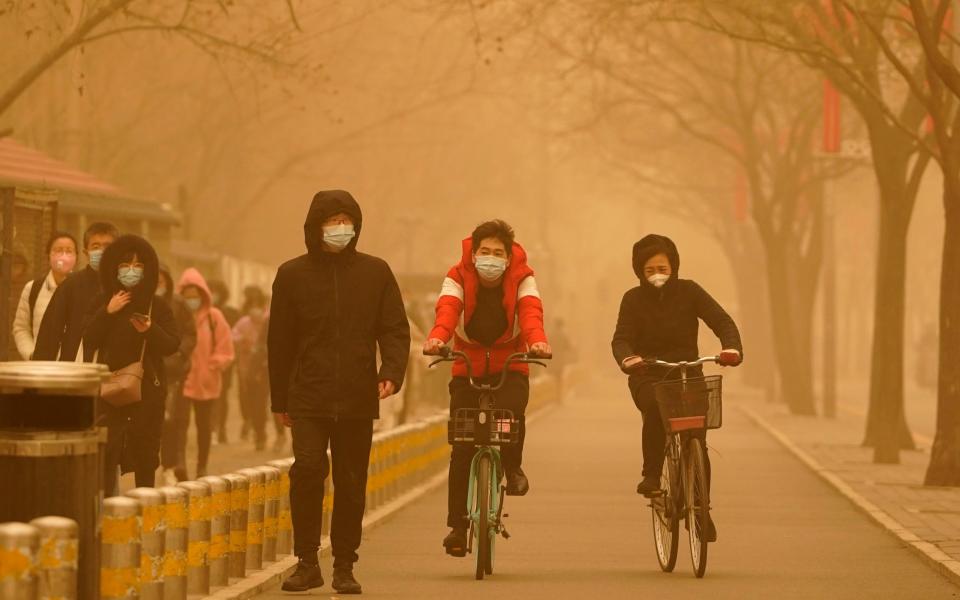Beijing battered by worst sandstorm in a decade as skies turn yellow amid 'ecological crisis'

Beijing was cloaked in an apocalyptic yellow-brown haze on Monday, with skyscrapers obscured behind layers of sand and dust as China’s capital experienced the worst sandstorm in a decade, threatening the health of millions.
Strong winds blew sand from the Gobi desert across much of northern China, including as far west as Xinjiang region. Poor visibility caused hundreds of flights to be grounded and cancelled while traffic choked the roads.
Sand particles in the air caused pollution to soar, with some air quality indices for Beijing hitting extremely hazardous levels of more than 9,000. Air quality readings put both London and New York City at around 25 to 30 on Monday.
Levels of small particles in the air rose to more than 700 micrograms per cubic meter in Beijing, far higher than the average daily concentration of 25 as suggested by the World Health Organization.
Known as PM 2.5, these microscopic particles can embed deeply in respiratory systems and enter the bloodstream, and in the long-term, impair the lungs and heart.

Massive sandstorms are becoming more common around this time of year, given Beijing’s proximity to the Gobi desert, which is expanding each year due to climate change and deforestation from years of rapid urbanisation.
China has spent billions of dollars planting trees trying to create a “great green wall” to slow the creeping desertification and to build a natural way to filter particles and limit how much sand is blown into Beijing each year.
“Beijing is what an ecological crisis looks like. After two weeks of smog and static air, strong wind carries a sand storm in, sending AQI off the chart,” Li Shuo, a climate adviser for Greenpeace China. “It’s hard to claim we are moving forward when you can’t see what’s in front.”

The Chinese government has pledged a number of climate and environment goals, including president Xi Jinping declaring that China will be carbon neutral by 2060. It’s an ambitious goal for China, the world’s biggest polluter, especially given its continued reliance on coal, the biggest source of energy for power generation.
The sandstorm enveloping Beijing is forecast to last a few days as the dust clouds blow further south.
Sandstorms also hit neighbouring Mongolia, where six died and more than 300 people were reported missing, according to China’s state news agency Xinhua.
Such storms can be detrimental for the environment, depositing dust in rivers and streams and affecting water quality, according to the World Meteorological Organization.
They pose health risks to people, as sandstorms are linked to respiratory illnesses and can blow microorganisms around, such as bacteria, and also viruses.

 Yahoo News
Yahoo News 